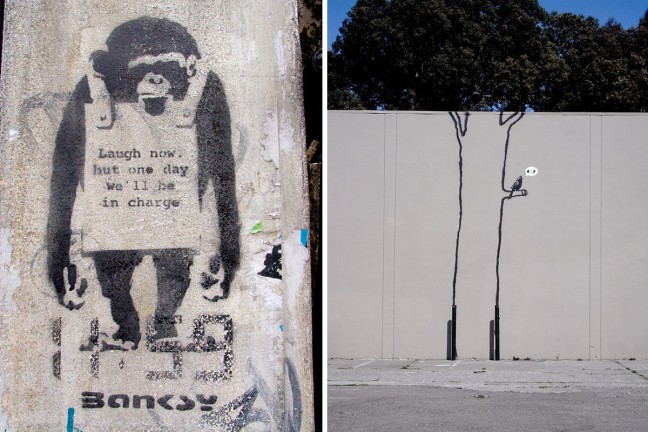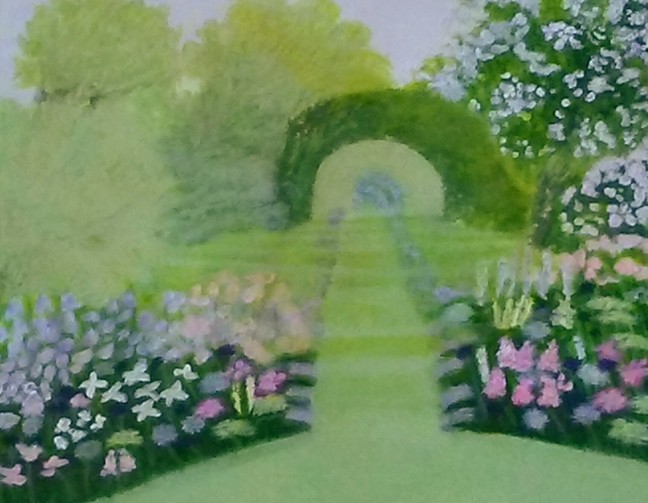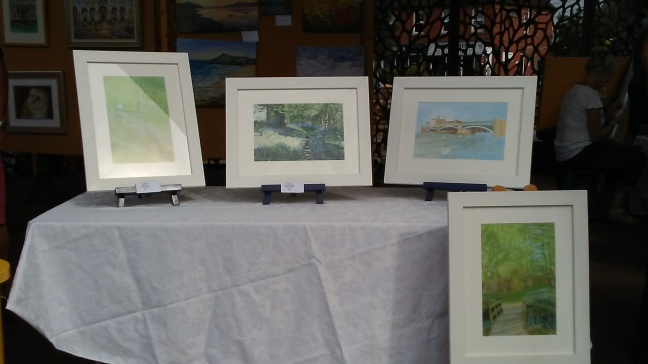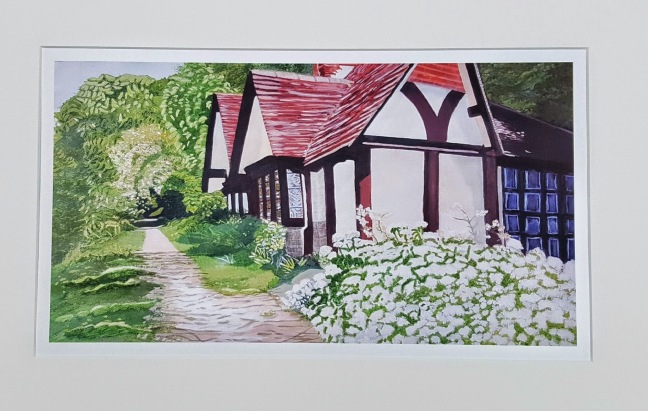Hello Everyone
I found this really interesting article on the enigma, Banksy I hope you enjoy it
At this point it’s no secret that Bristol artist Banksy is an enigma. Not only is his identity unknown but his work has a mysterious quality to it, which goes hand in hand with the nature of graffiti and street art in general. What’s elevated the artist to greatness is his constant commentary on society in general and politics, using his art as a way to discuss (openly, and in public) the problems we face. He is revered by almost everyone, including the few who see his popularity as a means of profit for themselves. And herein lies the convoluted, legally murky territory of who owns Banksy’s art and the moral quandary of whether it should actually be up for sale.
As often as you hear of the artist and his work, you’ll likely hear about “Banksy’s” being sold, authenticated or not. The artist himself has even weighed in on the topic, with an installation piece during his New York takeover in 2013, where a stall was selling Banksy originals under the guise of counterfeits.
A new documentary, Saving Banksy, investigates this even further. When Banksy’s “Haight Street Rat” was sighted in San Francisco and soon to be painted over by authorities, art collector Brian Greif – who acts as executive producer on the doc – felt compelled to save the artwork and have it exhibited for the public in a gallery. This process of “saving a Banksy” became the basis of the film, which also features interviews with other prominent street artists.
Ahead of the theatrical launch of Saving Banksy we had the chance to sit down with director Colin M. Day and art collector/executive producer Brian Greif to discuss why they set out to make the documentary in the first place. You can view the trailer for the documentary below.
Why did you initially set out to make Saving Banksy?
Colin: We always wanted to use this film as a way of educating the public of the do’s & dont’s to preserving street art. On one hand, you’ve got the historical aspects of this art form and the fact that 99.9% of it will eventually be lost to the sands of time. At the same time though, street art and graffiti culture have become such a worldwide phenomenon that some of these street pieces have become so valuable that people are cutting them out from the walls they were originally painted on. What made the film a great vehicle to discuss this subject, was the incredible story behind Brian Greif’s removal of Banksy’s “Haight Street Rat” in San Francisco. It was the rare case of an art collector removing a Banksy street piece (that the city was going to buff) for the sole purpose of preserving it for public display.
Brian: We set out to make this documentary because we believe “Street Art” and “Graffiti” are important art movements. We hope to accelerate public appreciation of these art forms and encourage the public and city officials to protect it. When Banksy visited San Francisco, the city had a very strict anti-graffiti ordinance, so Banksy’s pieces began disappearing within days. We wanted to document the process of saving one of his pieces for the public. Our intention was to preserve the “Haight Street Rat” for public display in a museum or gallery. Obviously, we had no idea what we were getting into, and the events following the removal of Banksy’s “Haight Street Rat”, made for an interesting documentary.
Your film explores the ownership of Banksy’s work. Who do you think his art belongs to – the artist, the general public, the owner of the physical space on which it’s painted, no one, everyone?
Colin: This is a complicated issue and in some ways, I can make arguments that it belongs to each of those groups. I personally feel that graffiti and street art, once it’s been painted, belongs to the people within the community in which it was created. That said, I think Banksy (and all street artists) own the copyright of their images. The issue for Banksy in particular is that almost everything he paints is done illegally, so in the eyes of the law, the owner of the building that it was painted on, is the owner of the artwork. This is why you see so many “unauthenticated” Banksy’s ending up at auction. The frustrating thing for Banksy, is the fact that he doesn’t have any recourse for people removing public pieces for the purpose of profit. When these street pieces wind up at auction for large sums of money, Banksy is the one who is legally still in the wrong since he painted the works without consent from the building owners in the first place.
Brian: If the paintings are done without permission, then legally they are owned by the building owner. That’s why it is perfectly legal for art dealers to work with building owners to remove and sell these works without the artist’s permission. So, legally, it is owned by the building owner. Our film looks at the moral question of whether art that was intended for the public should be removed and sold without the blessing of the artist. Banksy intends these works for the public. Our hope is that before people make a decision motivated by profit, they consider the greater good.
What is your opinion on people who exploit Banksy’s art for personal benefits?
Colin: I am strongly against exploiting Banksy’s (or any artist’s work) for personal gain. Banksy goes out of his way to speak up for those that cant speak for themselves, so I think it’s even more deplorable when his pieces from Palestine, for example, end up selling for millions of dollars. Glen E. Freidman has a great quote in the film where he compares people profiting from removing Banksy street pieces to the poachers in Africa killing endangered animals and the business men that then put the horns in their office. I tend to agree with him in that analogy.
Brian: While art dealers may have the legal right to remove and sell Banksy paintings, we believe these works serve a much greater good if they remain “public.” In many cases, collectors are buying these works as an investment or status symbol. Removing these paintings from their original location takes them “out of context.” Buying them as an investment or status symbol takes “out of context” to a whole new level. Paying hundreds of thousands of dollars for a painting that was meant to be outside and makes a statement against greed or capitalism brings a whole new meaning to the word contradiction.
What, in your opinion, moves Banksy the most – self-expression or fighting for a good cause?
Colin: I think with Banksy, you’ve got a mix of both, but definitely in the earlier days, it was probably more self-expression. The interesting thing with Banksy though is the fact that after he gained the fame that most artists dream about, he has chosen to remain anonymous rather then become a Damien Hirst or Andy Warhol type of personality. Instead, he seems more interested in sneaking into Palestine to create works that reflect the struggles of the Palestinian people or turning a decaying plot of land on the English coast into “Dismaland“. Because of those examples, I think that currently he is motivated more by creating works supporting causes that he believes strongly in.
Brian: We think it is both. His self-expression is very much informed by the fighting for a good cause. That’s why his work has such a connection with the public.
To which level would you measure the influence of OG graffiti artists, such as Seen, Lee Quinones, DONDI, Kase on Banksy’s art?
Colin: Since Banksy used to do more traditional graffiti before moving to stencils, I’m sure there was influence from the usual suspects of graffiti pioneers (DONDI, SEEN, Doze Green). There’s also a bit of controversy regarding Banksy being inspired by Blek le Rat, who was painting rats with stencils years before Banksy’s first rat appeared. I’m sure he was influenced by Blek but he’s definitely got his own voice and style when it comes to stencil graffiti.
Brian: Most street artists began as graffiti writers. When Banksy first began painting, he was heavily influenced by OG graffiti. What set him apart was his ability to “write” in spaces no one else could access. Placing work in the most difficult spots set him apart, but to take advantage of that, he needed to paint faster. That’s where the stencil component to his work began. If you watch Banksy’s “B-Movie” he talks about how he wanted to be a “New York style” writer. He said he wasn’t very good at the style, but he was very good at placing his work in spots no one else would ever dream of accessing.
Art is often misunderstood or taken in a wrong way. What has been the most absurd or interesting explanation of Banksy’s work you’ve ever heard?
Colin: I’d have to say that the most absurd/interesting things I’ve heard regarding Banksy are all the different theories regarding his identity. The folks that become obsessed with this are usually missing the greater point behind the work. That said, I do have to admit that the conspiracy theories regarding his identity do make me laugh.
Brian: There are many absurd assumptions about Banksy. They idea that he is not a single artist, but instead a “collective” of artists is one. He does work with and support several artists, but Banksy is a single entity. One of the most interesting subjects in the movie is how Banksy protects his identity. Banksy has a team of people that set-up diversions to conceal the artist while he paints. Saving Banksy explains some of the diversions used in San Francisco. Diversions like using a U-Haul truck loaded with old mattresses to paint his street level “No Trespassing” mural on Sycamore Street in the Mission District. Banksy’s crew parked the van on Sycamore, propped the mattresses up against the wall to hide the artist. They stationed members of the team on cell phones on both sides of the van. This gave Banksy the time to complete the mural without anyone seeing him.
Banksy is often heralded as one of the most revolutionary artists of our time, at least with regards to erasing preconceptions of what art is. While some artists “sell out” so to speak, Banksy has managed to hold on to his integrity. How long do you think the Banksy buzz will remain, and what would it take to destroy it?
Colin: That’s just it, if Banksy wanted to sell out, he could’ve been one of the most dominant forces in the advertising world. Who knows, maybe if and when he gets outed, we’ll see what happens. I do think though that he is clever enough in his message that he will remain relevant for years to come. I don’t think the “Banksy buzz” will be going away anytime soon.
Brian: We think Banksy is here to stay. He is the Andy Warhol of our time, in terms of influence and impact. He has had incredible influence on the street art genre and artists within the genre. His decision not to work within the system, to avoid galleries and over-commercialization of his work makes him an enigma. He doesn’t seem to be motivated by sales or fame. His focus on events or projects like “Dismaland” or his “New York Residency” put him in an entirely new category of artist. In our opinion only Banksy could destroy Banksy at this point.
Could you elaborate on Banksy’s use of the expression “predatory art speculators”?
Colin: When Banksy and the rest of these artists began painting graffiti, they were considered criminals. They risked they lives and freedom every night they went out to paint. The provocative nature of graffiti and appealing aesthetics are partially responsible for it blowing up into a global phenomenon. When Banksy used the words “predatory art speculators,” I think what he was referring to could be what is also called “culture vampires.” These are the folks that come out of the woodwork with fat checkbooks, only after the dust has settled. They drive the costs up to a level that endangers the entire scene by making it inaccessible for the people that it’s always been intended for.
Brian: The intent of steet art is to provide a “free public gallery.” While removing and selling street art may be legal, artists consider it predatory because it is done without the artist’s consent, the artist receives nothing from the sale.
Do you think there has been any progress in lawmakers’ and officials’ understanding of street art since the graffiti boom in the ‘70s?
Colin: I think there’s been great progress since the 1970s. Shortly after we interviewed San Francisco City Supervisor London Breed, she announced a new plan to reform the city’s way of handling fines for vandalism. I was particularly surprised to see graffiti lettering on canvases in her office. City officials and developers are beginning to see the value of street art as a tool for gentrification as well. 10 years ago, the Wynwood neighborhood of Miami became the spot to paint simply because there was no pushback from the local community and the police had bigger things to deal with. It became a much different story after local local real estate mogul Tony Goldman noticed what was happening and began the Wynwood Walls. Now the neighborhood is called the Arts District and is filled with trendy shopping and specialty coffee shops.
Brian: Yes, definitely, most street artists are now commissioned to do “legal” walls. The street art movement has become so popular that building owners will now pay a premium to have a mural on their property. Many of the artists still like to paint “illegally” because it takes them back to their roots. In major cities, street art is now becoming a welcome part of the urban landscape. Projects like Wynwood Walls in Miami have opened the eyes of city officials and property owners all over the world.
There are perhaps dozens of young/up-and-coming artists who have been inspired by Banksy. Are there any notable young talents you would like to mention?
Colin: Most of my favorite artists are actually in Saving Banksy. ROA, RETNA, Herakut, Doze Green, REVOK, Risk, Mars-1, Anthony Lister and Niels “Shoe” Meulman are among the artists that I find most inspiring. They all have very unique styles and are always going bigger with each new project.
Brian: There are so many great artists in this genre it is hard to pick. While not “up and coming” we tried to feature the work of as many artists as possible in the movie. Artists like: RETNA, Rone, Tavar “Above” Zawacki, Daleast, How & Nosm and Miss Van. One artist who isn’t featured in the movie that we love is Curiot out of Mexico City. We encourage everyone to check out works by these artists.
Are there any current artists who you think share Banksy’s clout in other art forms (music, film, fashion)?
Colin: That’s a tough one to answer, but I’d say Run the Jewels or Major Lazer in the music world are comparable, simply because money isn’t the main driving force and the soul that came from this way of creating has rewarded them greatly. In fact, Run the Jewels actually performed at Dismaland, so there’s a connection there as well I guess.
Brian: What Banksy does is unique. We can’t compare it to other creative mediums. There are revolutionary artists in every creative field, but they are all distinct.
Saving Banksy hits select theaters from January 13, head here for further details
Please subscribe for more content every Tuesday at 10.00am
Joanne







 How to get Pinterest followersPinterest is a famous social network that is known because of its unique design and usability. Several brands have earned millions of followers because of their pins and boards. By pinning good content, you allow your pins to gain more popularity. If you are not
How to get Pinterest followersPinterest is a famous social network that is known because of its unique design and usability. Several brands have earned millions of followers because of their pins and boards. By pinning good content, you allow your pins to gain more popularity. If you are not 


